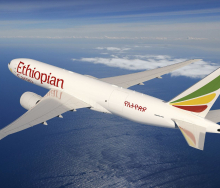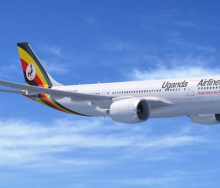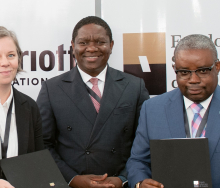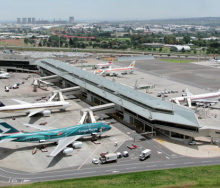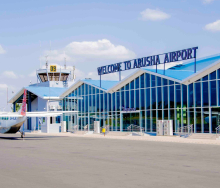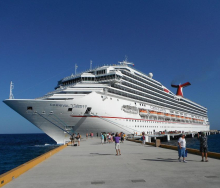REGIONAL competition in
Africa is heating up with
several airlines exploring
other aviation hubs across
the continent, a development
that could cost South Africa
its coveted position as the
gateway to Africa.
Struggling to establish a
base in South Africa, fastjet
has now turned to Zambia as
a hub for regional expansion
into Africa.
Fastjet ceo, Ed Winter,
told TNW that the airline
felt the need to explore its
options. “Some countries are
just more forward-thinking
than others in terms of
liberalisation. The countries
in Africa that will embrace
liberalisation will rapidly
expand as hubs. Zambia is
an opportunity because the
government there is very
progressive and very forward
thinking.”
Ed adds, however, that
South Africa remains a key
hub as it has an important
infrastructural advantage
compared with the rest
of Africa. But the country
needs to establish itself as
a competitive marketplace
if it wants to retain its hub
position, he says. “Most of
the flights on regional routes
from Johannesburg are very
expensive. The cost per
seat kilometre is way above
European and North American
levels. That’s because
there has been a lack of
competition.”
Ed doesn’t only point
to airlines to create a
competitive environment. He
says if Johannesburg wants
to retain its hub status,
the government and airport
should also be looking at the
way they charge and make the
destination more attractive.
June Crawford, ceo of
Barsa, agrees, saying South
Africa should be doing
everything possible to achieve
sustainable airline operations.
“Less bureaucracy, fast
turnarounds from regulators
and government would be
helpful, as would moderate
attractive costs of doing
business here.” She admits
that countries such as Kenya,
Tanzania and Zambia are
geographically better placed
for hub operations than
South Africa. However, South
Africa has the best airport
infrastructure on the continent
and should therefore
capitalise on this.
Erik Venter, ceo of Comair,
agrees. “South Africa has a
very poor geographic position
as a hub, and the Middle
East carriers have broken the
legacy route structure that
artificially supported much of
the traffic that used to fly via
Johannesburg. Feed traffic
within Africa can now go
through the closest point in
Africa that connects with the
Middle East, thereby making
such points potential new
hubs.”
Rodger Foster, ceo of SA
Airlink, adds that with global
goliath airlines such as
Emirates having chosen to
operate directly to key African
destinations such as DAR,
LAD, LUN and HRE from their
hubs, there is no doubt that
travel patterns are changing.
He says SA needs to
concentrate on creating
south-south linkages, thereby
turning its location into a
geographical advantage. He
adds that carrier relationships
are not strategically founded
on global hub linkage
and airlines are not fully
benefiting from the potential
of hub interchange reciprocity.
“Unless there is an active
strategy to enhance the
potential development of
the OR Tambo hub, and this
applies specifically to Iata
member network airlines
that are geared for interline
exchange of passengers, OR
Tambo will, over time, become
less significant as a hub
within Africa and especially
Southern Africa.”
According to Rodger, the
wellbeing of South Africa
as the gateway to Southern
Africa (and Africa) pivots on
SAA’s ability to capitalise on
the power of its franchised
network system, and align
with the most powerful
network systems globally,
such as that of Air France at
CDG, British Airways at LHR,
Lufthansa at FRA, Emirates at
DXB and Delta at ATL.
Meanwhile, SAA is not about
to give up on Johannesburg
as a hub, says spokesperson,
Tlali Tlali. He says the airline
is lobbying the South African
government to ensure that
OR Tambo retains its status
as a major airport hub on the
African continent by continuing
to invest in infrastructure and
safety and by facilitating the
process to travel to and via
South Africa.
The eroding of JNB as a hub
06 Jun 2018 - by Dorine Reinstein
Comments | 0

